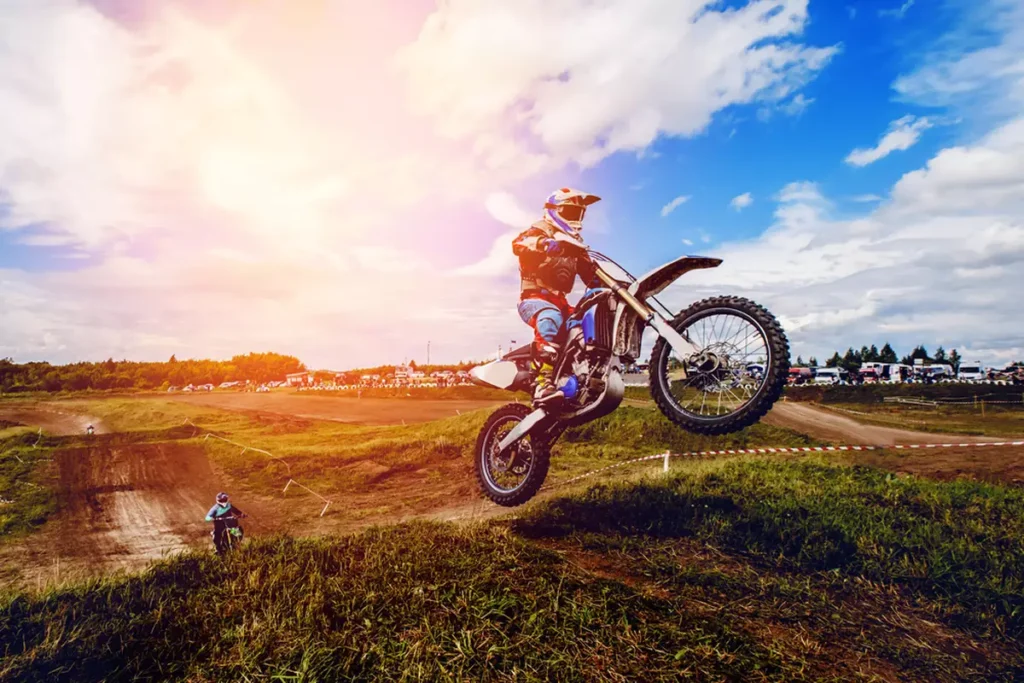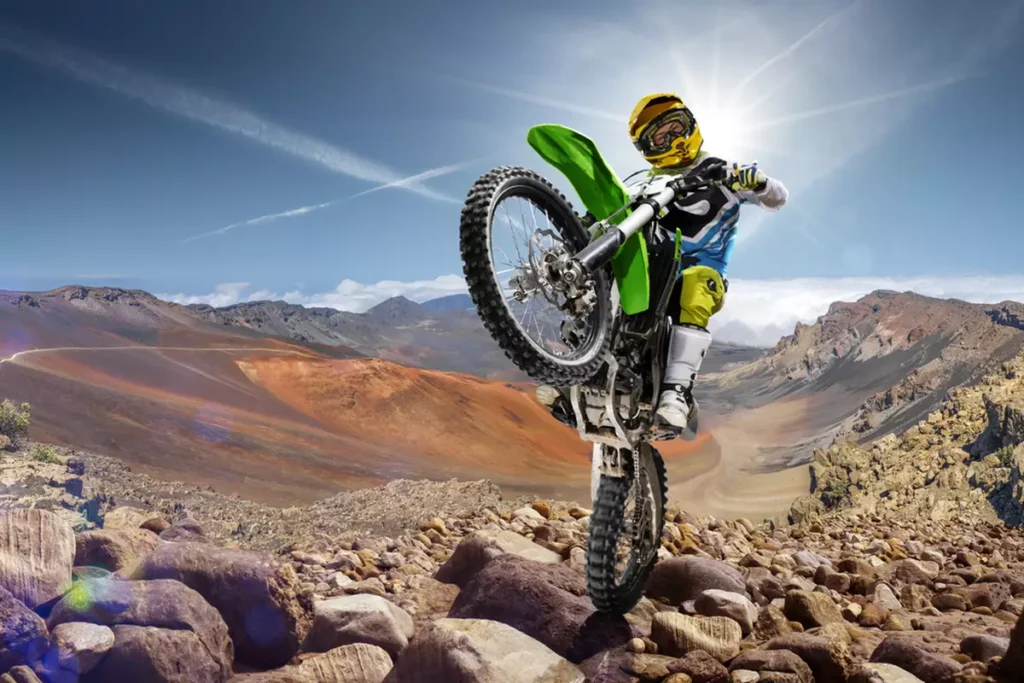Trail Riding 101: ATV & Dirt Bike Trail Riding Tips for Beginners


TL;DR:
Trail riding requires proper preparation and respect for safety. Before heading out, equip yourself with essential protective gear and complete a thorough pre-ride inspection of your machine.
Getting started with trail riding can feel overwhelming when you’re staring down your first dirt path. You’ve got your machine ready to go, but there’s a difference between knowing how to operate an ATV or dirt bike and actually riding trails with confidence.
Whether you’re planning to explore designated trails or venture into open terrain, understanding the fundamentals will help you stay safe and have more fun out there.
Before you even think about hitting the trails, you need proper protective equipment. This isn’t about looking cool or following rules just because someone said so. It’s about protecting yourself from serious injury when things don’t go as planned.
Start with a DOT-compliant helmet that fits snugly without being uncomfortable. Full-face helmets offer the best protection for dirt bike riders, while ATV riders might prefer an open-face option paired with goggles. Your helmet should fasten securely and stay in place when you shake your head around. If it slides or shifts, it’s not going to protect you when you need it most.
Eye protection is non-negotiable. Rocks, bugs, branches, and dirt will fly at your face, and regular sunglasses won’t cut it. Invest in proper goggles or a face shield that’s scratch-free and well-ventilated to prevent fogging. These dirt bike trail riding essentials will make a huge difference in your ability to see clearly and react to obstacles ahead.
Your hands and feet take constant abuse on the trails. Over-the-ankle boots with a good grip prevent your feet from slipping off footrests and protect your ankles from impacts. Quality gloves cushion your hands from vibration and protect against blisters and scrapes.
Long pants and a long-sleeved shirt or jersey protect your skin from scratches and sun exposure. You can find specialized off-road gear with built-in padding at the knees, elbows, and chest for extra protection.
You might be eager to get riding, but skipping your pre-ride inspection and preventative maintenance is asking for trouble. Being stranded miles from your vehicle because of a mechanical failure you could’ve caught beforehand is frustrating at best and dangerous at worst.
Check your tire pressure with a low-pressure gauge designed for ATVs or dirt bikes. Standard automotive gauges won’t give you accurate readings. Make sure all tires are inflated to the recommended pressure and that tires on both sides match. Uneven pressure can cause your machine to pull to one side. Look for cuts or damage that could lead to a flat.
Test your brakes before you need them in an emergency. Controls should operate smoothly and be positioned where you can reach them comfortably. Check that your throttle moves freely and snaps closed when you release it. Inspect cables for damage or dirt buildup that might restrict movement.
Don’t forget to check oil and fuel levels. Starting with a full tank gives you the best chance of getting back without running out. Look for any leaks around the engine or fuel system. These ATV trail riding essentials only take a few minutes to verify but can save you hours of problems later.
Start in a large, flat, open area where you can practice basic maneuvers without obstacles. Get comfortable with how your machine handles before you tackle more challenging terrain. Practice starting, stopping, and turning until these movements feel natural.
Proper riding posture helps you control your machine and react quickly when needed:
When you’re ready to move, make sure the engine is warmed up first. Apply the rear brake, shift into gear, and release the parking brake as you gradually apply the throttle. Smooth movements prevent sudden lurches that can throw you off balance. If your machine has a manual clutch, release it slowly to avoid jerky starts.
Turning requires you to shift your body weight, especially as speeds increase or turns get sharper. Move your weight forward and to the inside of the turn while looking in the direction you want to go. If your machine starts to tip, lean farther into the turn while reducing throttle and widening your arc if possible. These dirt bike trail riding tips become second nature with practice.
Hills demand respect and careful technique. Some hills are too steep for your skill level or your machine’s capabilities. If a hill looks questionable, it probably is. Never ride past the limit of your visibility. Slow down if you can’t see what’s on the other side of a crest.
When climbing, shift into a lower gear before you start the ascent so you maintain momentum. Move up on the seat and lean forward over the front wheels. Keep your feet firmly on the footrests. If you need to shift mid-climb, keep your weight forward and shift quickly while momentarily releasing the throttle.
Going downhill requires shifting your weight to the rear. Use a low gear and gradual braking rather than sudden stops. Keep your speed controlled and watch the trail ahead for obstacles. Never allow your machine to roll backward if you lose momentum going uphill. Apply brakes and dismount on the uphill side if necessary.

Learning how to get better at trail riding comes down to anticipating what’s ahead. Expert riders look well down the trail, not just at what’s immediately in front of them. This gives you time to plan your line through obstacles and adjust your speed appropriately.
Watch for sharp bumps, holes, ruts, and obstacles that could upset your machine. Loose surfaces like sand or gravel reduce traction and require smoother throttle control. Muddy sections can hide deep ruts or rocks. Rocky terrain demands careful wheel placement and slower speeds.
Different surfaces require different techniques. On soft terrain like sand, maintain steady momentum and avoid sudden throttle or brake inputs. Hard-packed trails give you more traction but can be slippery when wet. Roots and rocks are always slippery, especially when damp.
Off-road etiquette isn’t just about being polite. It’s about safety and preserving trail access for everyone. Stay on designated trails rather than creating new paths that damage vegetation and cause erosion. Follow all posted signage, including speed limits and trail restrictions.
Give other riders plenty of space, especially when passing. Slow down when approaching other riders who’ve stopped. They might be dealing with mechanical issues or simply taking a break. A friendly wave or quick check to see if they need help goes a long way.
Keep noise levels reasonable and be aware of private property boundaries. Some trails pass through areas where landowners have granted access, and disrespectful behavior can lead to trails being closed. Pack out everything you pack in and don’t leave trash or disturb wildlife.
When you meet hikers, horseback riders, or cyclists on multi-use trails, yield the right-of-way and reduce your speed. Your machine is louder and more intimidating than you might realize. Being courteous helps maintain good relationships between different user groups.
Never ride alone if you can avoid it, especially when you’re just starting out. Having someone with you means help is available if something goes wrong. Tell someone about your planned route and expected return time before heading out.
Carry a basic tool kit with spare parts, like spark plugs, wire, tape, and a tow rope. Your machine’s toolkit might not have everything you need for trail repairs. A first aid kit, water, snacks, and a charged phone (in a waterproof case) should come on every ride.
Know your limits and don’t push beyond your skill level to keep up with more experienced riders. There’s no shame in taking an easier line around an obstacle or walking your machine through a tricky section. Building skills gradually keeps you safer than trying to tackle advanced terrain before you’re ready.
These ATV trail riding tips will help you develop confidence without taking unnecessary risks:
At minimum, you need a DOT-compliant helmet, goggles or face shield, gloves, over-the-ankle boots, and long pants with a long-sleeved shirt. Additional protective gear, like chest protectors, knee pads, and specialized off-road clothing, provides better protection.
Start on easy, designated trails and practice basic skills in open areas first. Always complete a pre-ride inspection, ride within your skill level, and never ride alone. Follow all trail rules and signage while staying alert for obstacles and other trail users.
Maintain steady momentum without sudden throttle or brake inputs. Stand on the footrests to absorb bumps with your legs, keep your weight centered, and look ahead to choose the best line through obstacles. Adjust your speed based on visibility and terrain conditions.
Yes. Stay on designated trails, follow posted speed limits and rules, yield to other trail users, keep noise reasonable, and pack out all trash. Give stopped riders plenty of space and be courteous to landowners and other outdoor recreationists.
Ready to start your trail riding adventure? Shop 125cc trail bikes and find the perfect machine to begin exploring.
Disclaimer: While we endeavor to keep the information on our blog up to date and correct, Maxtrade (Coolster) makes no representations or warranties of any kind, express or implied about the completeness, accuracy, reliability, suitability, or availability with respect to the website or the information, products, services, or related graphics contained on the website for any purpose. Any reliance you place on such material is therefore strictly at your own risk.
Register